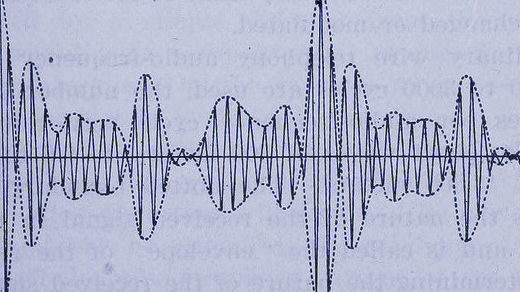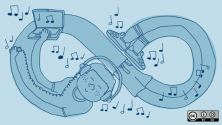Finding good quality, open source audio samples can be a challenge. I've been getting increasingly into composition and creating music in my spare time, using the open source tool Ardour and the creator-focused distribution Ubuntu Studio. I've been looking for samples of specific sounds or loops to include.
I'm familiar with many tools to find images, but until recently, I hadn't come across a similar option for audio resources.
Open source sound samples
Finding specific sounds can be challenging if you can't record them yourself. Several resources are available, but not many provide sounds under an open source license.
Freesound
Enter the incredible treasure trove that is Freesound, a collaborative database of Creative Commons licensed sounds where you can browse, download, and even contribute.
You can find pretty much anything on Freesound, from the sounds of a sleepy tour bus on the road to a door opening and closing or a ghostly shriek. While Freesound mainly focuses on sound samples, there are also some loops on the site. Many sounds are licensed under Creative Commons 0, so you can do whatever you like with them from a licensing perspective. However, that's not true for all of them, so check the license before you use anything, as you may need to credit the creator.
The site allows you to check out the sample rate, bit depth, and channels so you can be sure that the sample will work with your composition, and it has a built-in rating system and download count. A waveform display allows you to get some insight into the character of the sound sample before you preview it.
The search filters on Freesound are not as strong as other sites. Sounds will sometimes be grouped into packs of similar sounds, like this one for scary noises. This can help you quickly grab a bunch of similar sounds to play with. The quality of the samples is variable, so you might need to clean up the audio on some samples. If you're feeling bored, there's even an option to select a random sound from the database—and trust me, some are very random! Freesound also has a community forum where you can participate and learn from others.
Nasa space sounds
If you are looking for some otherworldly sounds or want to snoop on the conversations between Earth and space, the Nasa Space Sounds database might be a great place to look. It's fascinating to explore the recordings from the various missions and listen in on the communications back and forth, some of which are narrated. Several recordings have different sounds from different space missions, from the Sounds of Mars from Perseverance Rover to audio from the Apollo missions.
Sounds from the Nasa site are released under the Creative Commons category Public Domain Mark 1.0, meaning that it is free of known restrictions under copyright law.
Loops for music creation
If your focus is more on creating music, you might be looking for loops: short recordings of music that you can alter and tweak in your own compositions.
There are all kinds of sample packs out there from commercial sources, but there are also a lot of royalty-free loops available on Looperman. With over 200,000 loops uploaded by musicians, DJs, producers, and creators, there's everything from electronic dance music and trap to classical. There are also over 12,000 a cappella and spoken-word loops, and it's a great resource for finding things like bass lines or drum beats. You need to have an account to download, and you must download tracks before you can upload anything.
Looperman resources are not Creative Commons, but the site defaults to a similar concept: "All samples and loops are free to use in commercial and noncommercial projects," according to the site license, but "you can NOT claim copyright of those loops." A cappella and vocal samples are in a separate category, so checking the specific terms for any loop you consider using is important.
Each loop tells you the beats-per-minute, key signature (where relevant), and software it was created in. A waveform shows the character of the loop, which gives you a good idea of whether it is likely to work with your project. You can preview loops within the browser and leave comments for the creator. There is a lively community and many great resources to help you create your own loops.
Get creative
I hope this gives you some ideas of where to find audio resources for your next project, and I look forward to hearing what you have created!







Comments are closed.